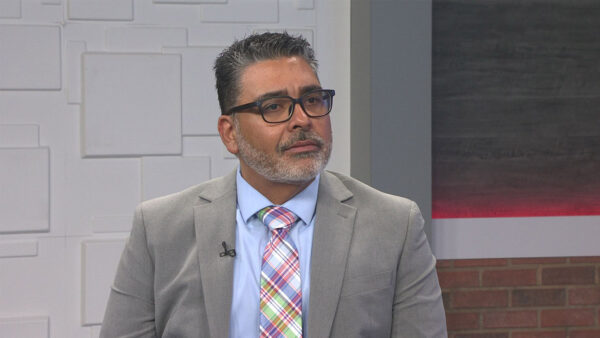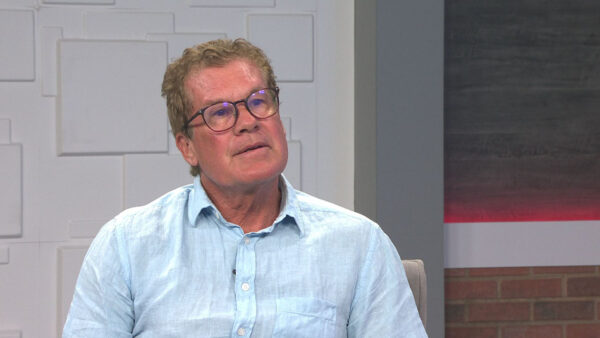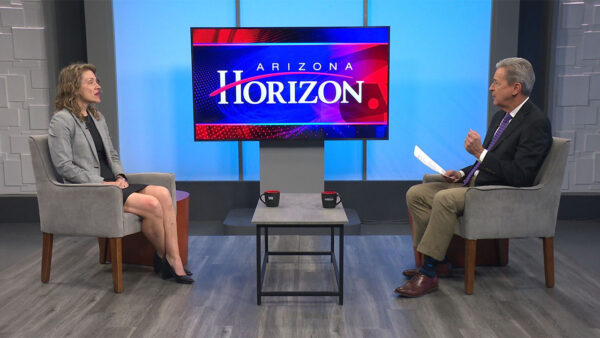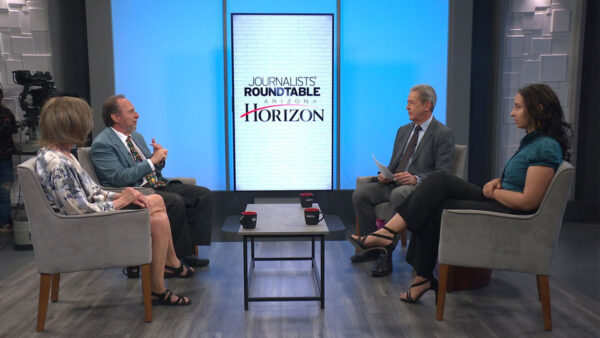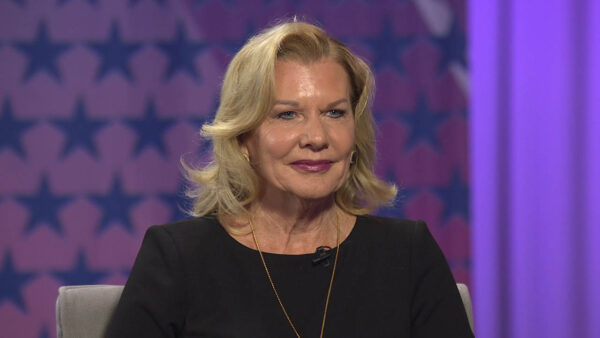New Numbers from the Centers for Disease Control and Prevention indicate more children than previously thought have autism. The increase is attributed to wider screening. Dr. Bryan Davey of the Arizona Autism Coalition Board and Director of Behavioral Services at ACCEL (Arizona Centers for Comprehensive Education and Life Skills) will discuss the new numbers.
Ted Simons: One in 64 Arizona children has some form of autism. That's according to new estimate from the Centers for Disease Control. Nationally the autism rate is one in 88, almost twice what it was six years ago. Here to talk about these troubling numbers is Bryan Davey, Director of Behavioral Services for ACCEL, a Valley-based non-profit that provides education and life skills for special needs children and adults. Thank you so much for joining us tonight.
Dr. Bryan Davey: Thank you.
Ted Simons: Before we get into this now, let's define terms. What is autism?
Dr. Bryan Davey: Autism is a genetic and neurobiological disorder that affects many individuals, it affects young children, it can affect adults. It's early onsets are around 18 months, two years, three years of age. It's really a hallmark and characteristics of repetitive behaviors. We'll see some antisocialization. Some may have a lack of language.
Ted Simons: Okay. With that in mind, why are these numbers increasing the way they are? What's going on out there?
Dr. Bryan Davey: That's really the million-dollar question. We have some answers to the increase. We know that we are better at diagnosing at this point. We are better at identifying those that are at risk. And those that have -- that are on the spectrum at some level, either severely affected or mildly affected. That takes care about 50% of that increase. The other 50% we're really unsure of as a field at this point.
Ted Simons: Better diagnosis and screening helps a little bit. How do you diagnose autism?
Dr. Bryan Davey: It's done typically by a developmental pediatrician or developmental psychologist. They run a battery of tests to identify whether or not somebody is affected by autism spectrum disorder.
Ted Simons: As a definition, as a diagnosis, has that changed over the years?
Dr. Bryan Davey: We do not have a change in the definition of what autism is at this point. We will have a change in the DSM about what will encompass autism. There's still some debate, how it'll shake out is not yet seen.
Ted Simons: Is it likely to be expanded more?
Dr. Bryan Davey: It's not being expanded. It may be contracted a little bit.
Ted Simons: Interesting.
Dr. Bryan Davey: We just don't know how the chips will fall from the different associations looking at that.
Ted Simons: Autism is more common in boys, do we know why?
Dr. Bryan Davey: No, again we don't know why it's more common. In Arizona you mentioned one in 64, and we're looking at about one in 40 boys. That is just a shocking number for us. In terms of classrooms, in Arizona that's one child for every two classrooms that's going to be formed. Nationally we're looking at almost a million children affected by some form of autism spectrum disorder. The other thing to think about in terms of this dataset, most disturbing to some of us in the field of research, CDC is working with numbers that are already four years old. I understand, we all understand we have to look at those numbers and it takes time to gather and analyze those. But that is still alarming for us, we still don't know today what that number is.
Ted Simons: From what you see, your experience out there in the field, do you think it's more prevalent than from four years ago?
Dr. Bryan Davey: I've seen this continue to escalate in my career. Regardless of the geographic location, we see this prevalence continuing to grow. In the public school system it's hit very hard by this. In the districts we work with and our own school, children and adolescents are coming to us with severe behavior problems, severe deficits in communication. They are having to be addressed in difficult settings. That could be in a classroom with 10 to 12 student or even more than that. That falls on our special education teachers, behavior analysts, SLPs to be able to engage these students, design plans, track their progress, and make database decisions. We have to adjust. Every single plan is individualized. This is a disorder that we just can't have a cookie cutter approach to. Because it is a spectrum disorder, individuals are affected in different ways it's just not one particular approach that solves the problem for a particular child or adolescent.
Ted Simons: You mentioned nationwide one in 88, in Arizona one in 64. I know other states, in Utah the prevalence is even higher. Is that because of better screening and diagnosis? There are areas where it seems rare and others where it seems more common?
Dr. Bryan Davey: One could make the assumption that Arizona has better screening, however we -- again, we get back to the idea that we know about 50% of the reason why we're seeing this increase and the rest is really unexplained.
Ted Simons: You mentioned genetics, a biggie here. We hear about childhood vaccines maybe being a factor. What are your thoughts?
Dr. Bryan Davey: The data is clear that there are no links between vaccines in children and autism spectrum disorder. That being said, the onset of autism is around three years of age or younger. It correlates well with vaccinations being a given. There is that very emotional attachment to this happened, I gave my child these shots and this was the cause of that. We cannot discount that for parents who feel that way, and we have to take into account the emotion. The data is very clear that just doesn't exist at this point.
Ted Simons: What about illness in a pregnant mom, medications taken by a pregnant mom?
Dr. Bryan Davey: We have a lot of research conducts across the United States looking at prenatal issues that may go on in utero between the mother and child. Again, that research is preliminary at this point. But you cannot deny that there are some environmental factors that are going into this.
Ted Simons: Last question: With everything we've talked with all the numbers now being crunched, do you believe autism is an epidemic in America?
Dr. Bryan Davey: One in 88 affecting over a million children, it's hard not to call it that. Recently, Autism Speaks mentioned if you combine childhood cerebral palsy, cancer, and others, you could not get to the number of children affected with autism spectrum disorder today.
Ted Simons: Thanks for joining us.
Dr. Bryan Davey: Thanks for having me.
Dr. Bryan Davey:Arizona Autism Coalition Board and Director of Behavioral Services at ACCEL;





